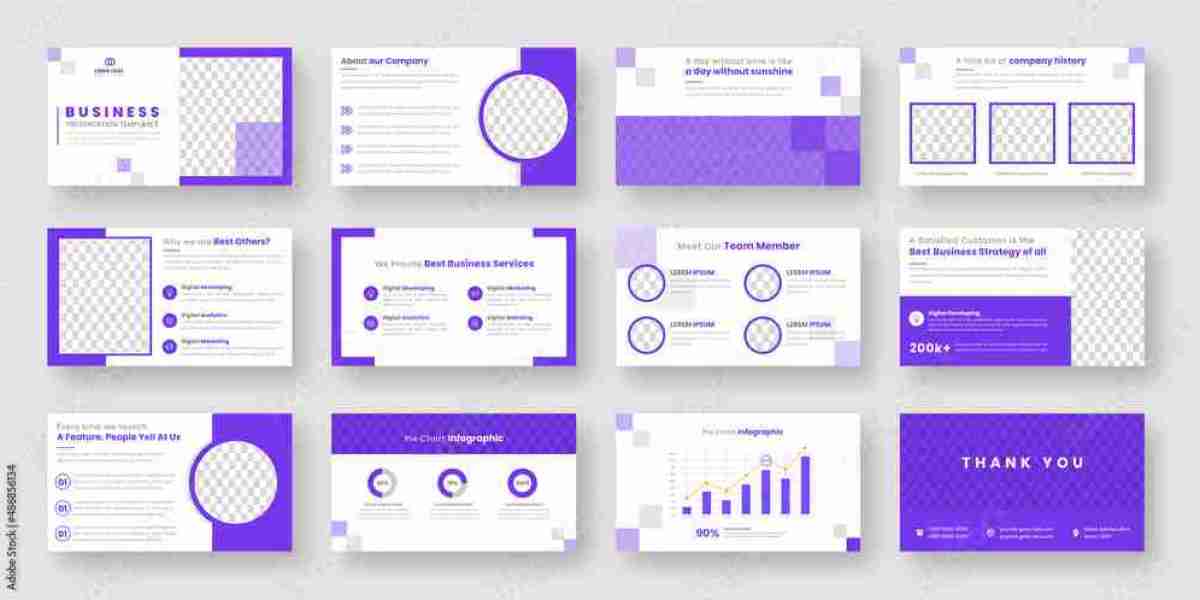Whether you're pitching a startup idea, delivering quarterly results, or inspiring a team, your audience craves not just data, but narrative. Presentation templates that focus on storytelling offer a powerful way to communicate complex information while maintaining engagement and clarity.
But how exactly can you infuse storytelling into your presentation design? Creating a template that enhances narrative flow requires thoughtful structuring, intentional design, and a clear understanding of your audience. In this article, we’ll explore practical and creative tips for creating presentation templates that are structured around storytelling principles.
1. Start with the Narrative Arc
Every good story follows a narrative arc: a beginning, middle, and end. Your presentation should too. When designing templates, incorporate layouts that support each phase of this arc:
Beginning (Setup): Introduce the topic, background, or challenge. Use title slides, overview sections, and problem statements.
Middle (Conflict or Development): Delve into the details. Show data, trends, or case studies that build tension or curiosity.
End (Resolution): Offer solutions, insights, or a call to action.
By thinking in terms of this structure, you ensure your template flows in a way that feels natural and satisfying to the audience.
2. Design for Visual Hierarchy
A strong visual hierarchy guides the viewer’s eye through the story. Your template should help highlight the main point on each slide while supporting content takes a secondary role. Use varying font sizes, colors, and spacing to direct attention.
Consider:
A large, bold headline at the top
Supporting text in a smaller font
Visuals like icons or charts that reinforce the message
Well-designed PowerPoint templates can establish this hierarchy automatically, saving time for presenters and ensuring consistency.
3. Use Color Intentionally
Color plays a vital role in evoking emotion and highlighting key parts of your story. Choose a palette that supports the tone of your message. For instance:
Blue conveys trust and professionalism
Red suggests urgency or passion
Green can imply growth or success
In storytelling-focused templates, use accent colors sparingly to draw attention to key data points or takeaways. Backgrounds should remain neutral to prevent distraction.
Create master slides with a consistent color scheme that supports your narrative without overwhelming it.
4. Create Section Break Slides
Just like chapters in a book, your presentation should have clear divisions between major parts. Section break slides help reset the audience’s attention and signal a shift in the story.
Design these slides to be visually distinct, possibly with:
A strong visual (photo or illustration)
A brief, intriguing title
Minimal text
This gives presenters a chance to pause, transition, and prepare the audience for the next part of the journey.
5. Integrate Visual Storytelling Elements
Humans process images faster than text. A good storytelling-focused template will provide ample space and formatting options for visuals:
Full-bleed image layouts
Picture-in-text slides
Icon or infographic placeholders
Encourage users to illustrate data and ideas with visuals. For instance, replace bullet points with process diagrams, use photos to show user personas, or insert maps to show geographical impact.
Make sure your template includes ready-to-use visual layouts so presenters can easily convey meaning through imagery.
6. Offer a Variety of Layouts
A compelling story often involves different scenes, each requiring its own visual treatment. Your presentation template should offer multiple slide layouts to accommodate diverse content types, including:
Quotes
Timelines
Comparisons
Data charts
Testimonials
This variety supports dynamic storytelling and prevents visual monotony. Ensure each layout retains the same visual language—consistent fonts, margins, and iconography—to unify the presentation even as content changes.
7. Build in Consistent Typography
Typography sets the tone of your story and affects readability. Choose two or three complementary fonts for your template—usually one for headings and one for body text.
Use these fonts consistently across all slide types:
Titles in a strong sans-serif or serif typeface
Body text in a clean, legible style
Optional accent text or quotes in an expressive font (used sparingly)
Include defined font sizes and line spacing in your template to avoid inconsistency in the final presentation.
8. Guide with Slide Prompts
A well-designed template can double as a guide for storytelling. Consider adding subtle prompts or sample content in placeholder text:
“Use this slide to highlight the core challenge”
“Insert a customer quote that demonstrates impact”
“Show before-and-after results”
These hints help presenters align their content with the structure and pacing of a good story. The goal is to encourage a shift from dumping data to narrating insight.
9. Design for Flexibility and Scalability
Storytelling can take many forms, from a five-slide investor pitch to a 50-slide training seminar. Your presentation template should accommodate both.
Allow for scalability by including:
Light and dark versions for different environments
Options for text-heavy and visual-centric slides
A modular design that lets presenters rearrange sections without losing coherence
This flexibility ensures your template can support many different storytelling needs while maintaining a professional look.
10. Include Space for Interaction
Good stories involve the audience. Your template should make room for interactive elements, such as:
Discussion slides with prompts
Poll or question layouts
“What do you think?” slides to pause and reflect
These moments invite engagement and make the story feel collaborative. Design with margins and whitespace in mind to allow presenters to adapt slides during live sessions.
11. Anticipate Real-World Usage
Templates often break down when real-world content doesn’t fit the design. Avoid this by testing your layouts with real presentation material.
Make sure your designs handle:
Long titles
Bullet points with sub-points
Complex data charts
Text overlays on images
A storytelling-focused template should maintain visual balance and clarity even when content is more than ideal.
12. Incorporate Transitions and Animations Thoughtfully
While storytelling benefits from movement, excessive transitions can distract. Instead of flashy effects, use subtle animations to:
Introduce bullet points sequentially (to pace the story)
Fade in images or quotes (for dramatic effect)
Highlight changes in data (like comparing before-and-after)
Limit animations to one or two types across the presentation. Consistency reinforces your story’s rhythm and helps keep the audience focused.
13. Provide a Clear Call to Action Slide
Every story leads somewhere. Whether it’s convincing stakeholders to approve a budget or inspiring a team to adopt a new strategy, your presentation should end with a purpose.
Design a slide template specifically for the conclusion, with ample space for:
A key takeaway
A next step or action
Contact information or follow-up details
This final slide acts as the story’s resolution. Make it visually impactful but uncluttered, reinforcing the core message one last time.
14. Add a Notes-Friendly Layout Option
Often, presenters need space to jot notes or add reminders. Include a slide design with a sidebar or footer area for notes that won't be visible during presentation mode.
This is especially useful for workshop or training sessions where facilitators want to stay on-script while maintaining narrative flow.
15. Test with a Short Story First
Before rolling out your storytelling-focused template across your organization or team, test it with a small story-based presentation.
Use a case study, customer journey, or team success story to try out:
The flow of slides
The clarity of design
The ease of inserting content
Gather feedback on how the template supports the story. Adjust based on real usage to improve practicality.
Conclusion
Creating presentation templates with a storytelling focus means moving beyond static slide design. It’s about anticipating the journey your audience will take and designing each element to guide them through that journey with clarity, emotion, and purpose.
By integrating structure, visuals, prompts, and interactivity into your design, you transform PowerPoint templates into dynamic storytelling tools. These templates not only make presentations more engaging—they make messages more memorable and actions more likely.
In the end, every presentation is a story waiting to be told. The right template simply helps tell it better.








